My article entitled Conjuring Up a Lost Civilization: An Analysis of the Claims Made by Graham Hancock in Magicians of the Gods[1] was published in Skeptic magazine on Sept. 14, 2017 It has been an interesting road to the final publication. Michael Shermer (editor of Skeptic magazine) asked me to join him on the Joe Rogan Experience podcast #961 and Youtube video cast (JRE) in a debate with Graham Hancock and geologist Randal Carlson which I have linked (Hancock invited planetary scientist Malcolm LeCompte). The three and half hour podcast has had millions of views on various platforms including 1.4 million on Youtube. According to Shermer in an accompanying article in Skeptic, during the week of the show it was downloaded 120 million times “putting him [Rogan] on par with the biggest talk show hosts on television” and making our podcast one of the most popular in the world (I became involved in the debate at 2:04:45).
Rogan is normally a neutral host based on what I have seen of some of his earlier shows, but that was certainly not the case in this podcast. The early sections of the show pitted Rogan, Hancock, and Carlson against Shermer as he tried to defend our skepticism toward Hancock’s book. I will let Shermer’s words in his article stand without further comment.
Shermer writes a monthly article for Scientific American. By sheer coincidence, his article on Hancock’s book was posted the day of the podcast. Shermer muses in his Skeptic article about how Hancock wrote him after the podcast vociferously objecting to “the rubbishing of his life’s work” in the Scientific American article. Shermer explains that he is truly sorry that Hancock felt personally attacked and that was not his intention. I was also the brunt of Hancock’s outrage over my skepticism about the contentions he makes in his book. I posted an early version of the article here on my blog — I use my blog primarily as a way to show students how science and logic can be used to address controversial claims in various fields (e.g., GMOs, fracking, global warming, etc.). The original article had many editorial changes but due to copyright precedence by Skeptic I only showed the original article submitted. Prior to the JRE podcast, Hancock found the original article and became visibly angry during the podcast over what I had written (I do not wish to inflame him further by asserting that he was angry but Hancock used the word angry on Facebook after the podcast: “Judging from the Youtube comments to my recent appearance on the JRE I have been transformed into a hate figure because I expressed anger at the article posted online in January 2017 by Marc Defant”). Like Shermer, I had no intention of personally attacking Hancock and was apologetic that he misunderstood my intentions when I first came on the podcast. I cannot speak for Shermer but I think skeptics, myself included, are somewhat befuddled by the acceptance of non-scientific claims by many in the general population. Hancock’s book is an international bestseller and will continue to influence uncritical minds for generations. People like Carl Sagan and James Randi started taking people to task in the 1970s for making outrageous and unfounded claims (e.g., Erich von Däniken and his alien visitation scenario) which eventually led to the formation of skeptic societies. The goal is not to personally attack anyone but to demonstrate how faulty some of the more fantastic claims are. I deeply support Hancock’s right to his opinion, but as scientists, I believe we have a duty to dispute fantasy that masquerades as scientific inquiry — for example, von Däniken’s books.
I need to identify some misunderstanding which Hancock has taken full advantage of, and I have been unable to comment about while I waited for the publication of my paper by Skeptic magazine. After the podcast, Shermer asked me to remove my blog post on Hancock because, obviously, he wanted people to read the article in Skeptic. I readily agreed to remove the article. In a weird twist, Hancock and many of the viewers of the podcast insisted that this demonstrated that I had made claims in the blog that were incorrect. That is not true. As I stated in the podcast, I stand by the claims I made about his book both on the podcast and in the Skeptic paper. In fact, I elaborated on what I said on the JRE in my Skeptic article and have added additional comments below that were not in the magazine article. My original revised paper after the JRE was so long Skeptic had to cut some of my arguments to avoid a book-size article. Consequently, I elaborate below on several of the topics not addressed in the Skeptic paper particularly because I never got a chance to express them in detail on the JRE.
The gravity of the situation
In Hancock’s discussion of the Incan archaeological site Sacsayhuaman in Peru, he recounts how he was guided around the ruins by some mystic named Jesus Gamarra, who thinks that the finely crafted rocks at the site were not done by the Incas but by ancient people in a time when “gravity was lower” so the huge blocks could be moved more easily. I would not pay much attention to this unscientific remark other than to make note of Hancock’s astonishing comment about this “theory”: “The lowered gravity is linked in his mind [Gamarra] with the notion that the earth once made much closer orbits around the sun—an orbit of 225 days and an orbit of 260 days—before settling in to its present 365 day path. He could be right [my emphasis]; new science suggests that the orbits of the planets are not fixed and stable.” Hancock does not seem to realize that the gravitational pull on an object at the surface of the earth has practically nothing to do with the period of the orbit of the earth around the sun. How could Gamarra be right? As Newton discovered in the 1600s, the gravitational pull between two objects, say the earth and a large rock, is directly related to the mass of the earth and the rock and the inverse of the square of their distance.
In fairness to Hancock I quote his remarks from the JRE: “He [referencing me] just presents me as buying what Jesus Gamara says. If that’s the standard that you are going to have in Skeptic magazine you have a serious problem…I do say he [Gamarra] may be right, but I don’t say he is right. I say this is not my interest.” I attempted to explain that my focus was not on whether he agreed with Gamarra but on his statement that rocks might not be as heavy in the past because the “period of the orbit of the earth around the sun” changed. He completely deflected away from my contention that changing the orbit around the sun has virtually nothing to do with how heavy rocks might be on earth. I believe the misunderstanding of the basic laws of gravity is important – it makes him suspect on other grandiose contentions he makes concerning science.
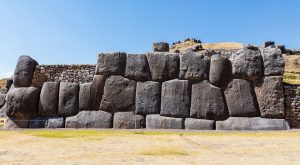 The superb construction at Sacsayhuaman in Peru.
The superb construction at Sacsayhuaman in Peru.
I have attempted to see if the statement could be read any differently (he skated around the issue in the debate), but I fail to understand how. Hancock states that Gamara may be correct in his contention that the rocks were lighter in the past because the orbit of the earth around the sun may have been 225 days (or 260 days). Instead of pointing out that a 225-day orbit around the sun in 900 AD when Sacsayhuaman was built seems silly (calendars have been around for more than 2000 years continuously demonstrating 365-day years), Hancock states “he may be right”. He may be right that the earth in 900 AD was where the orbit of Venus is now? But even if the earth in some mystical way was on a 225-day orbit a quick back of the envelop calculation using Newton’s equation of gravity demonstrates that the weight of a rock on earth will not be significantly impacted by the gravitational pull of the sun.
Moai and Easter Island
During the JRE, Shermer brought up the moai, the megaliths on Easter Island. More than 900 moai were sculpted between 1250 and 1500 AD, hauled to their present locations, and erected upright. One of them weighs over 82 tons. Many of the moai remain in the main quarry on the island – Rano Raraku. Hancock never addressed Shermer’s point that huge magaliths can be made by people with limited technological skills. I later reemphasized to Hancock that the hunter gatherers on Easter Island had no problems constructing megaliths larger than those at Glöbekli Tepe with stone tools. Why should we call upon the involvement of advanced civilizations? But Hancock again deflected, surprised that I would suggest that hunter gatherers lived on Easter Island: “What’s there to hunt and gather on a tiny island – have you been to Easter Island? I have, six times, and you can walk across it in three hours. What’s there to hunt and gather on that?”
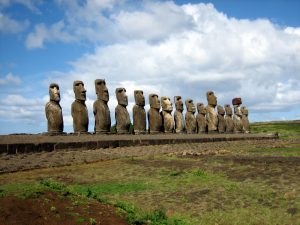 Moai of Easter Island
Moai of Easter Island
Apparently what he did not realize is that when Polynesians (the Rapa Nui people) first arrived on Easter Island probably around 300 AD, the island was a lush tropical paradise. Jared Diamond, in his book Collapse[2], proposed that the Rapa Nui hunter gatherers committed ecocide which led to the destruction of the island’s lush ecosystem and forced the Rapa Nui founders’ descendents to depend on a meager agriculture. The increased population of the Rapa Nui on Easter Island according to Diamond led to deforestation and overkill of native species, decimating the ecosystem. The point that Shermer and I were trying to emphasize is that hunter gatherers can make sophisticated megaliths without the help of “Magicians”. Hancock postulates in his book that Magicians of the Gods were needed also at Easter Island. No explanation has ever been given as to how these Magicians got to Easter Island or why but Hancock believes they were required to help the native population to construct the moai.
But alas, the argument is not specifically about the hunter gatherers on Easter Island. It is about whether it takes an “advanced civilization” to create large hand-carved megaliths – hand carved with stone tools I might add!. Not a single professional archaeologist working on Easter Island has ever suggested a requisite advanced civilization. They all agree they were quarried locally with stone tools by the indigenous population[3].
The End of the World
In Hancock’s 1995 book Fingerprints of the Gods[4], Hancock suggests that the end of the world is approaching, all neatly summarized in a section at the end of his book entitled “The End of the World”. He particularly references December 23, 2012 (from the Mayan calendar) as a likely date for the end, but in Magicians he adroitly does not dwell on why these doomsday scenarios never came to be. He does an about face and tells us he never meant for these dates to be taken literally and sheepishly states in Magicians: “it is important to be clear that in signaling the decades around 2012 as the end of a great cycle, the Maya were not speaking of the end of the world, as such, but rather of the end of an age.” I am reminded of Ghostbusters II when Peter Venkman (Bill Murray) is interviewing Milt Angland (Kevin Dunn) on his new book entitled The End of the World for Venkman’s television show World of Psychics. When Angland announces that the end of the world will be on New Year’s Eve at midnight, Venkman astutely notes that choosing a date so close to the present is not wise for book sales. After Angland gives a painful “fugue state” response as to why the date must be correct Venkman quips: “For your sake, I hope you’re right.” My advice to Hancock — pick an end of the world date that does not occur in your lifetime!
In response to this early version of the article, Hancock posted the following comment in his defense on his Facebook page: “Are my views not allowed to evolve, then, or react to new information? Must I never stray from the line I took in a 1995 book? If I did so would that be ‘scientific’?” Of course his views are allowed to change. But predicting the end of the world from the Mayan calendar is not scientific. One might expect that being wrong on such an important event as the end of the world would chasten him. Not so! After the end of the world did not occur in 2012, he continued down the same road making this comment in Magicians:
“It is possible, indeed highly probable, that we are not done with the comet that changed the face of the earth between 10,800 BC and 9600 BC. To be quite clear,… some suspect that ‘the return of the Phoenix’ will take place in our own time — indeed by or before the year 2040 — and there is danger that one of the objects in its debris stream may be as much as 30 kilometers (18.6 miles) in diameter. A collision with such a large cometary fragment would, at the very least, mean the end of civilization as we know it, and perhaps even the end of all human life on this planet. Its consequences would be orders of magnitude more devastating than the Younger Dryas impacts 12,800 years ago that left us as a species with amnesia, obliged to begin again like children with no memory of what went before.”
First Hancock assumes that a comet struck about 13,000 years ago – still a hotly debated research topic. Second, as I discuss in my Skeptic article, he contends that the precession of the earth tells him that we will be struck by another large comet some time before 2040. As I explained in Skeptic, precession has nothing to do with cyclical comet collisions. Predicting the end of the world seems to fascinate his audience but where is the science? It is complete speculation equivalent to soothsaying (I suspect that this will irritate Hancock but I want those that are willing to listen to know that predicting the end of the world through speculation has nothing to do with science – nothing personal here).
[1] Hancock, G., 2015. Magicians of the God: The Forgotten Wisdom of Earth’s Lost Civilization: St. Martin’s Press.
[2] Diamond, J., 2005, Collapse: How Societies Choose to Fail or Suceed: Viking Press, 592p.
[3] See for example Van Tilbug, J., 1994, Easter Island: Archaeology, Ecology and Culture, Smithsonion Institution Press, 191p.
[4] Hancock, G., 1995. Fingerprints of the Gods: The Evidence of Earth’s Lost Civilization: Three Rivers Press.

 The superb construction at Sacsayhuaman in Peru.
The superb construction at Sacsayhuaman in Peru. Moai of Easter Island
Moai of Easter Island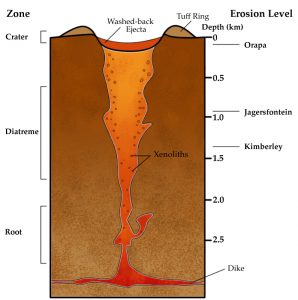 Asbestos Wikipedia
Asbestos Wikipedia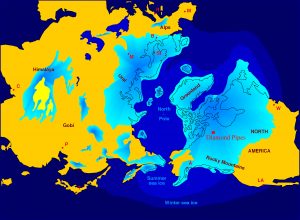 Base map from Wikipeida
Base map from Wikipeida After Nowicki et al., 2007
After Nowicki et al., 2007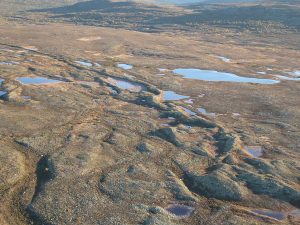 Esker in Sweden (Hanna Lokrantz Wikipedia)
Esker in Sweden (Hanna Lokrantz Wikipedia)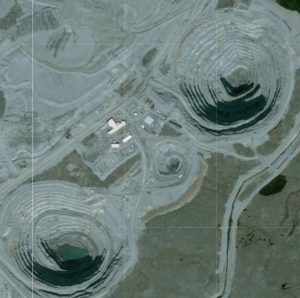 Ekati mines from the air (Google Maps)
Ekati mines from the air (Google Maps)